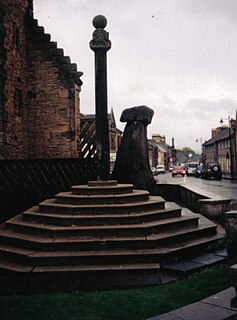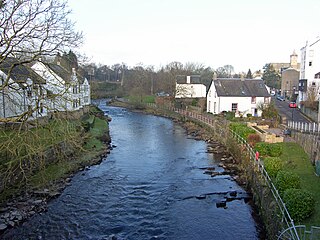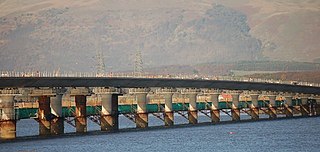Forestmill (or Forest Mill) is a small hamlet in the county of Clackmannanshire, Scotland. It is situated on the A977 road between Kincardine and Kinross, about 3 miles from the Kincardine end.

Clackmannanshire is an historic county and council area in Scotland, bordering the council areas of Stirling, Fife and Perth & Kinross and the historic counties of Perthshire, Stirlingshire and Fife.

Scotland is a country that is part of the United Kingdom. Sharing a border with England to the southeast, Scotland is otherwise surrounded by the Atlantic Ocean to the north and west, the North Sea to the northeast, the Irish Sea to the south, and the North Channel to the southwest. In addition to the mainland, situated on the northern third of the island of Great Britain, Scotland has over 790 islands, including the Northern Isles and the Hebrides.
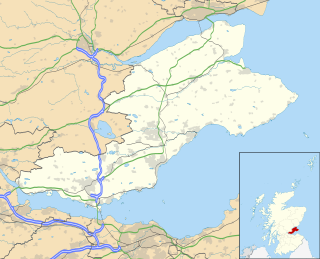
Kincardine or Kincardine-on-Forth is a small town on the north shore of the Firth of Forth, in Fife, Scotland. The town was given the status of a burgh of barony in 1663. It was at one time a reasonably prosperous minor port. The townscape retains many good examples of Scottish vernacular buildings from the 17th, 18th and early 19th centuries, although it was greatly altered during the construction of Kincardine Bridge in 1932–1936.
The Black Devon river runs through it towards the town of Clackmannan. [1] A notable feature on the river within Forestmill is a horseshoe weir. This was built in 1711 by George Sorocold to direct water from the river through a sluice into the mill lade that fed the Gartmorn Dam reservoir. [2] [3] The weir was added to the schedule of British listed monuments in 1972.

The Black Devon is a river in Scotland. It rises in the Cleish Hills, specifically the area known as Outh Muir, 1.5 kilometres (0.93 mi) north of Knockhill Racing Circuit, around 9 kilometres (5.6 mi) north-west of Dunfermline, Fife, with the gathering of three small streams in branch formation. The river flows westwards through Balgonar, north of Saline, and then merges with the Saline Burn. The Black Devon flows into Clackmannanshire, through the hamlet of Forestmill and past the town of Clackmannan. The Black Devon enters the River Forth south of Alloa, 1 kilometre (0.62 mi) north of Dunmore Pier.

George Sorocold was an engineer in Derby, England, in the eighteenth century.
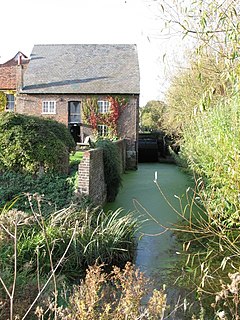
A mill race, millrace or millrun is the current of water that turns a water wheel, or the channel (sluice) conducting water to or from a water wheel. Compared to the broad waters of a mill pond, the narrow current is swift and powerful. The race leading to the water wheel on a wide stream or mill pond is called the head race, and the race leading away from the wheel is called the tail race.
The Scottish poet Michael Bruce taught at the primary school for several months before his death in 1767. [4]

Michael Bruce was a Scottish poet and hymnist.
The Clackmannanshire Council website shows the hamlet with a population of 55 in 2009, making it the smallest settlement in the county. However, in 2009, initial planning permission was granted for a significant expansion of the village by the Muir Group. A proposal to build over 1,200 houses, shops, hotel and golf course has been agreed by the council, despite some opposition by local residents. [5]



